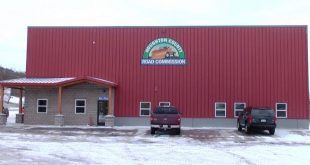The Michigan Department of Natural Resources recently completed an emergency dredging project in Keweenaw County to restore the Grand Traverse Harbor channel for commercial and recreational boating.
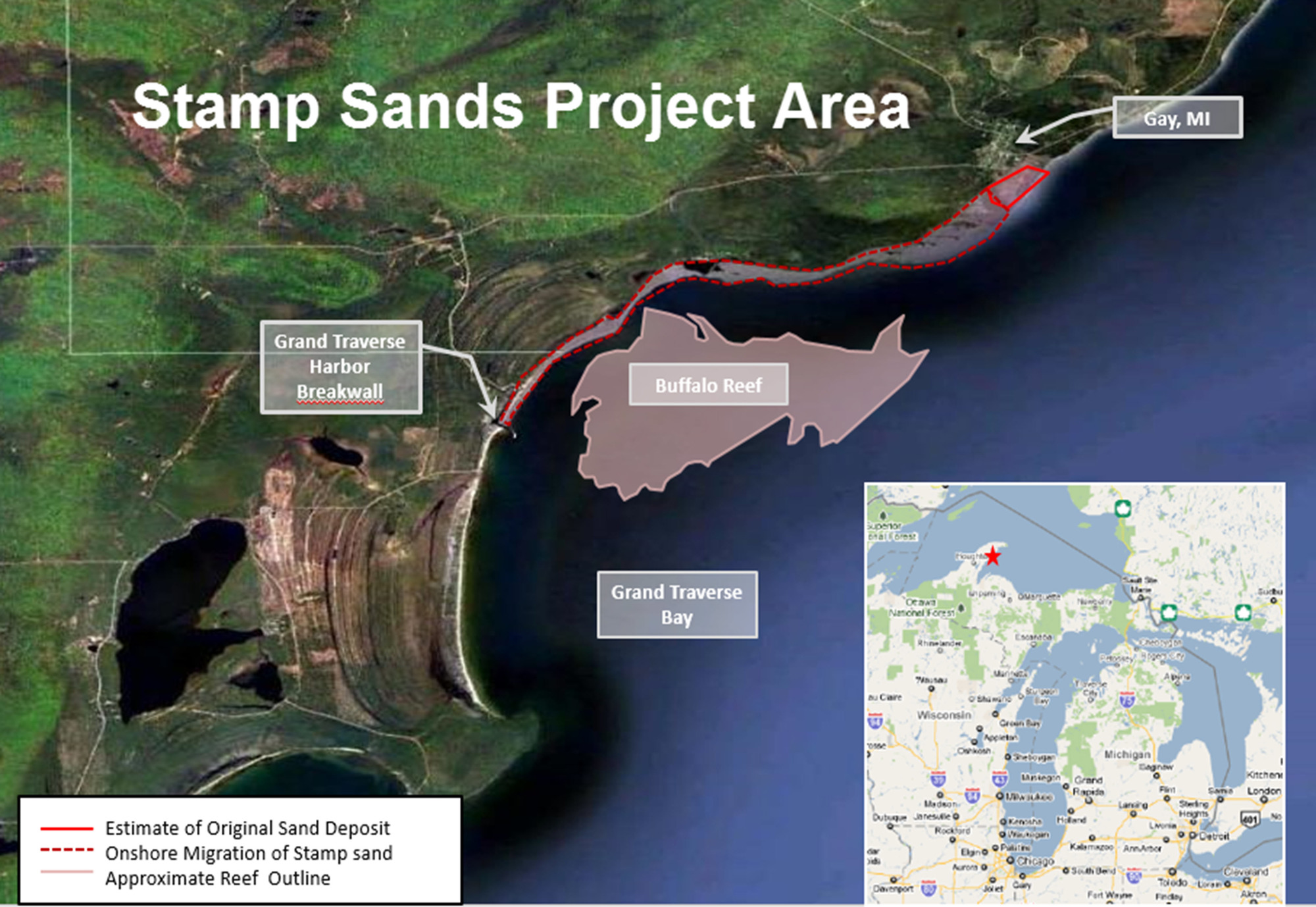
The $246,230 dredging project, undertaken by Marine Tech, LLC of Duluth, Minnesota, through the DNR’s Parks and Recreation Division, pumped 9,000 cubic yards of sand to a beach area north of the harbor.
Previous dredging at the harbor was done by the DNR in 2015 and the U.S. Army Corps of Engineers in 2009 and 2003.
Meanwhile, more extensive sand removal and containment efforts are needed to protect important lake trout and whitefish spawning habitat on Buffalo Reef and a juvenile whitefish area south of the Grand Traverse Harbor, which is situated on the east side of the Keweenaw Peninsula, northeast of Lake Linden.
“Buffalo Reef is a 2,200-acre spawning reef located down drift of stamp sands that have eroded into Lake Superior since the early 1900s,” said Phil Schneeberger, DNR Lake Superior Basin coordinator. “It is currently estimated that this reef, critical to both lake trout and lake whitefish populations in the area, is currently 35 percent unusable by spawning fish due to sand that has filled spaces between rocks, which are necessary for successful fish egg deposit and incubation. Furthermore, migrating sands along the shore have made nursery areas unusable by newly-hatched fish.”
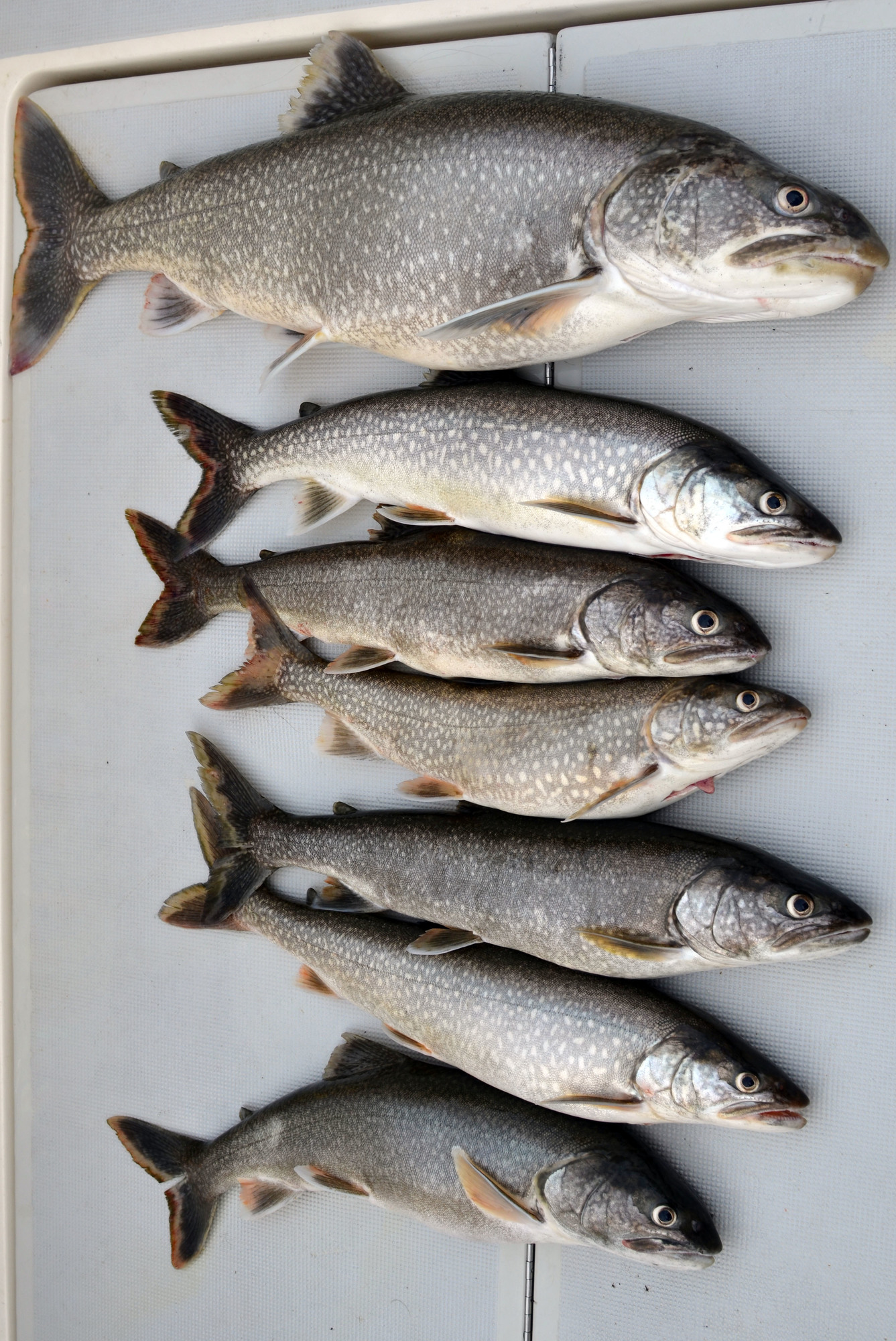
Nearly a quarter of the annual lake trout yield from Lake Superior’s Michigan waters comes from within 50 miles of Buffalo Reef. The Great Lakes Indian Fish and Wildlife Commission estimates the annual economic benefit of the reef at $1.7 million.
“The Keweenaw Bay Indian Community, as well as other tribes located around Lake Superior, are and have always been, fishing tribes,” said KBIC President Chris Swartz. “Since time immemorial, these tribes have used the resources provided by gitchi-gami (or Lake Superior) to sustain their communities. This sustenance is not only physical; it is also spiritual, cultural, medicinal and economic.”
Swartz said modeling predicts that by 2025, 60 percent of the reef will no longer be viable for lake trout and whitefish spawning.
In this part of the Keweenaw Peninsula, the coarse, black stamp sands threatening the reef were created as a by-product of century-old copper mining at the Mohawk and Wolverine mines.
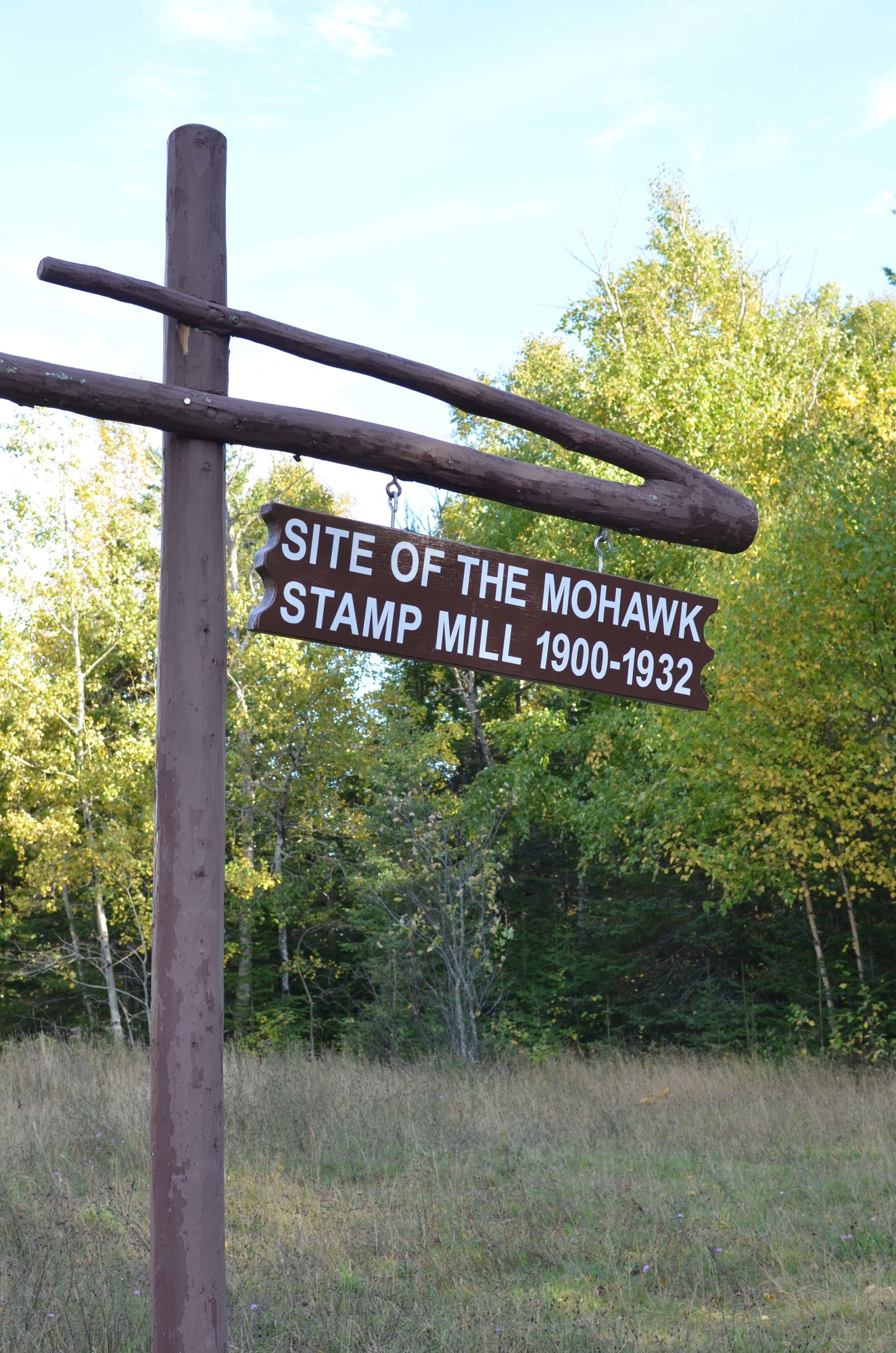
The mines hauled copper ore from near Calumet 13 miles to a four-stamp mill in the community of Gay, where ore was crushed by the stamps and the copper separated through a flotation process.

Stamp sands are the waste material resulting from the milling work. They were dumped into Lake Superior and on the shoreline.
Over the past roughly 80 years, the stamp sands have shifted south – moved by winds, waves and nearshore lake currents – about 5 miles to the Grand Traverse Harbor, covering 1,426 acres of shoreline and lake bottom.
“Without taking measures to slow the movement and down-drift accumulation of the stamp sands, they will eventually move past the harbor and deposit on the natural white sand beach south of the jetty, at the mouth of the Traverse River,” said Steven Check, a project manager with the U.S. Army Corps of Engineers in Detroit.
The DNR has applied for a permit from the DEQ, under the Great Lakes Submerged Lands Act (Part 325 of Michigan’s Natural Resources and Environmental Protection Act), to allow the Army Corps to remove more of the stamp sands from Lake Superior.
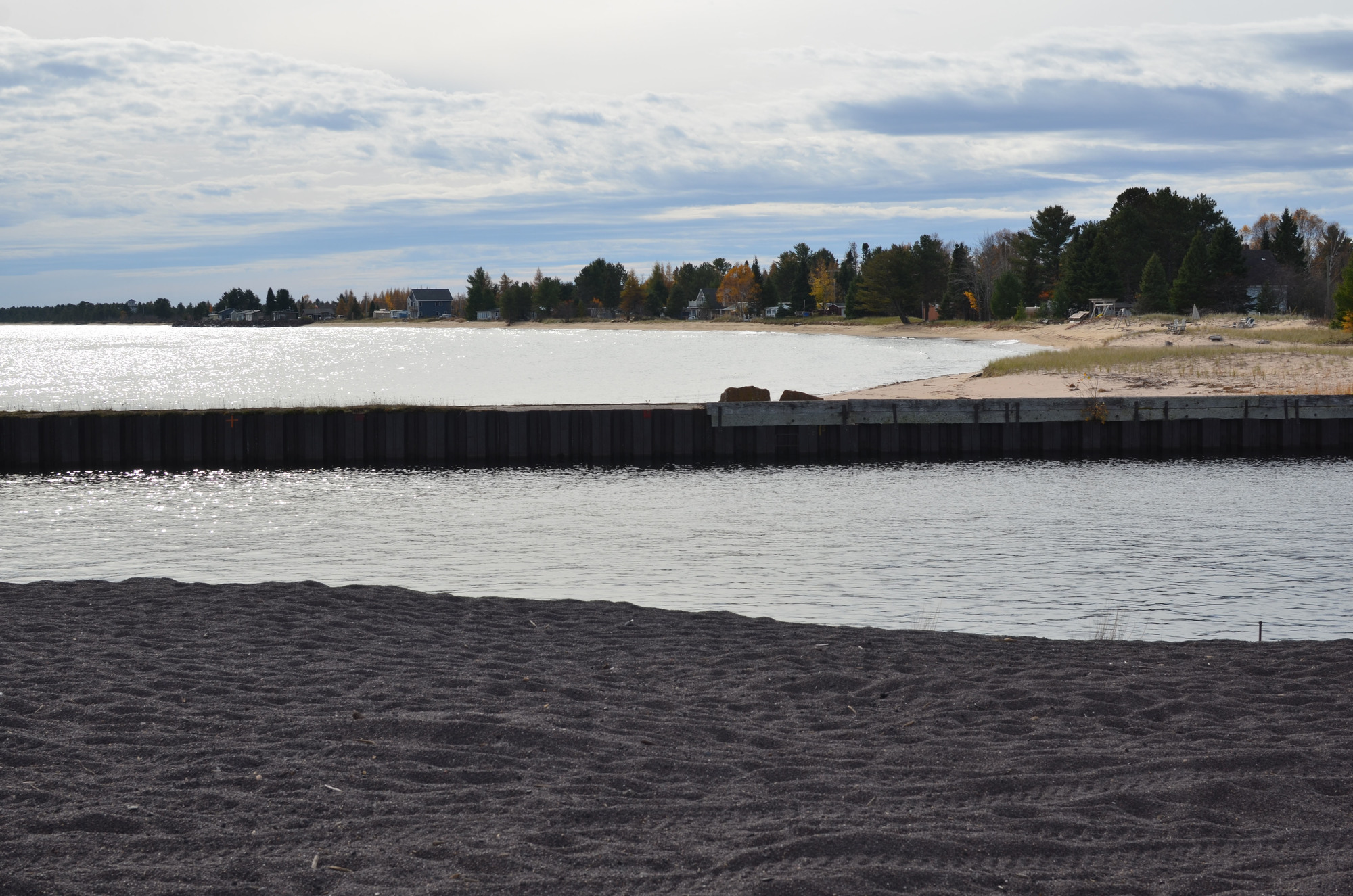
The EPA has provided $3.1 million to the Army Corps to design and carry out the dredging work, scheduled for May 2018. A public comment period on this permit closed Nov. 1. No public hearing for this permit application is planned, with a permitting decision deadline set for Dec. 14.
Under the permit, a total of 172,500 cubic yards of stamp sands are expected to be removed from an underwater bedrock trough, moving the sand to a 37-acre placement site that has the capacity to store 380,000 cubic yards. This 2,350-foot-long by 700-foot placement area, located about 1.5 miles from the dredge location, would be north of Buffalo Reef, behind a temporary berm.
Another 20,000 cubic yards of sand would be removed from Grand Traverse Harbor, while 10,000 cubic yards of material would be dredged from an upland area next to the harbor, on the beach.
“This dredging project would buy 5 to 7 years of protection for the reef and the whitefish juvenile recruitment area south of the harbor,” said Steve Casey, Upper Peninsula district supervisor for the Michigan Department of Environmental Quality’s Water Resources Division. “In the meantime, we need to develop a long-term, adaptive management plan, a solution, for the Gay stamp sands problem.”
The EPA has formed a cooperative multi-entity task force to develop that plan over the next couple of years, which will solicit input from many stakeholders, including the public.
A public meeting of the task force to kick off the effort has been scheduled for 6-8 p.m. Tuesday, Dec. 5, at the Lake Linden-Hubbell High School Auditorium, located at 601 Calumet Street in Lake Linden.

“We will be soliciting public input on what issues the plan needs to address and looking for volunteers to help us understand and resolve those issues,” Casey said.
One critical component of the plan will be to develop a beneficial use for the stamp sands, which is currently being explored by the MTECH SmartZone in Houghton. A primary goal of the plan would be that long-term maintenance would be assumed by a non-federal entity.
A task force steering committee has been named which includes Lori Ann Sherman, natural resources director for the Keweenaw Bay Indian Community, Tony Friona, Great Lakes liaison for the U.S. Army Corps of Engineers’ Engineer, Research and Development Center and Steve Casey, U.P. district supervisor of the DEQ’s Water Resources Division.
“We’re hoping construction can start on some type of control mechanism for the original pile of stamp sands by 2021, with completion two years after that,” Casey said. “We would then hope to put long-term maintenance dredging in place by 2026. The annual costs for that dredging would depend on which type of long-term remedy is selected.”
The stamp sands source pile at Gay was originally estimated to contain 22 million cubic yards of material, with 2.3 million cubic yards of material remaining today.
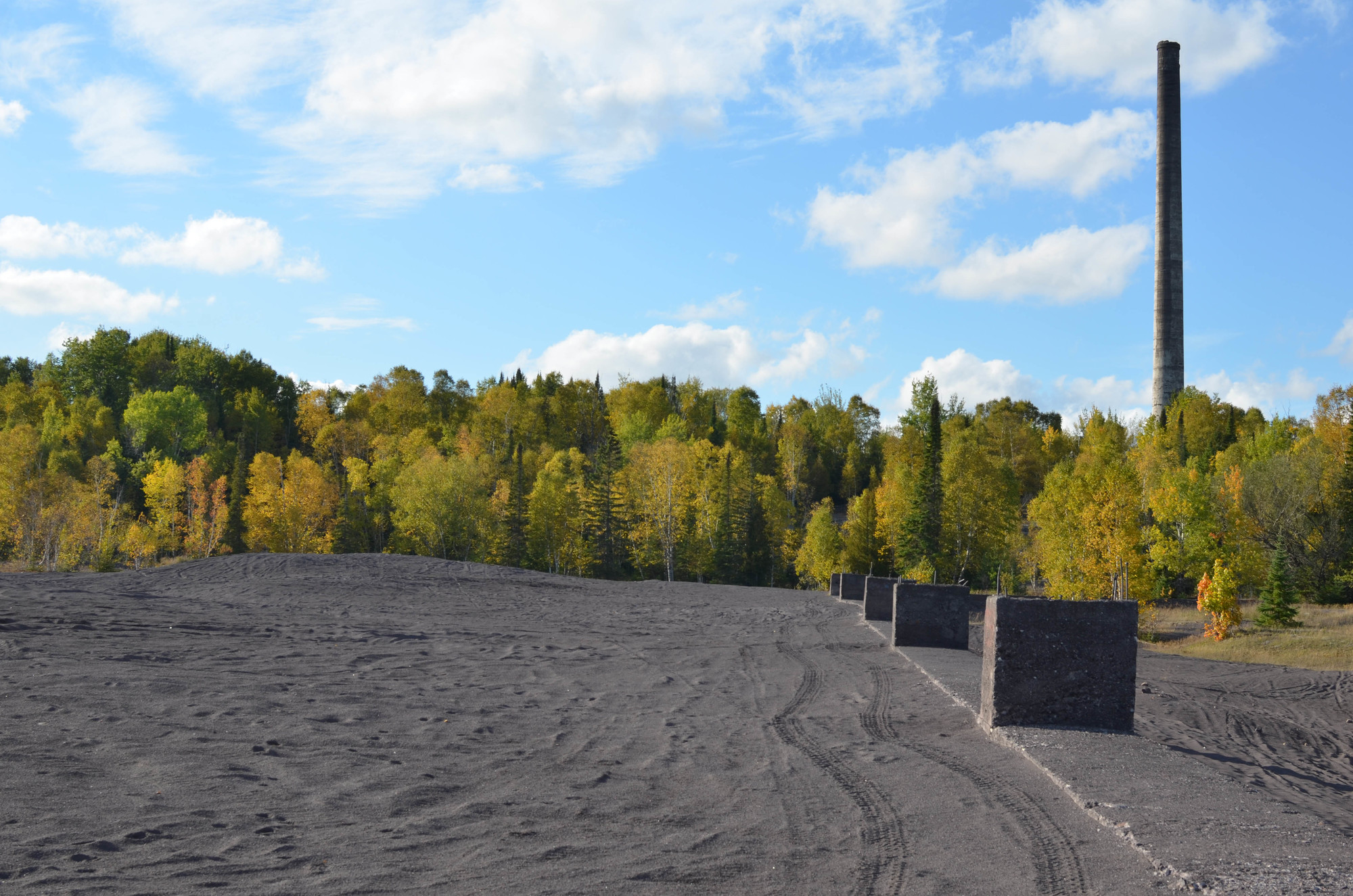
The community of Gay is named for Joseph E. Gay, who conducted early explorations of the ore body that would be mined by the Mohawk Mining Co.
Meanwhile, a separate dredging project has been proposed by private parties for a stamp sands deposit on the southwest side of the Keweenaw Peninsula. The project would extend roughly 13 miles, from the Village of Freda to the North Portage Entry.
This proposal is currently under permit application review by the DEQ Water Resources Division, and is in no way associated with EPA Task Force, DNR and Army Corps of Engineers efforts at the Gay stamp sand deposit. A public hearing is planned for spring 2018. No date for that session has been determined.
 Keweenaw Report Your Source for Local News and Sports
Keweenaw Report Your Source for Local News and Sports




